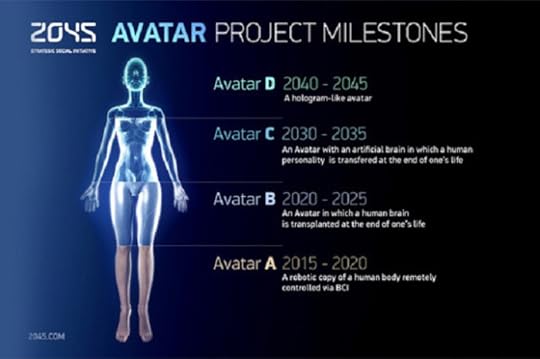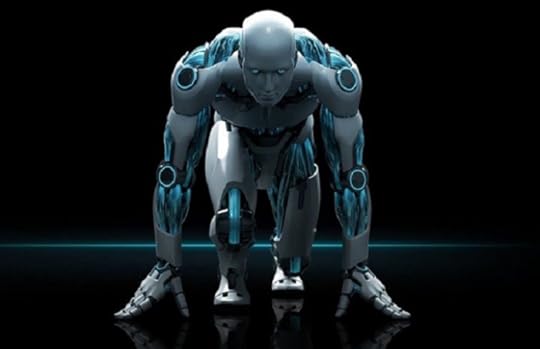Matthew S. Williams's Blog, page 26
March 19, 2016
Good News… Of A Promotional Nature!
As I’ve been talking about non-stop for the past few months, I got a novel in the works. As of the writing of this post, I’ve written 25 chapters and almost 50,000 words (that terrible middle part!) But what I haven’t shared yet is that some lovely websites have promised to promote it as soon as its done. This is a first for me, and something that I’m really looking forward to!
Truth is, this wouldn’t be possible were it not for the professional writing I’ve been doing for the past year and a half. And it all started a few months ago when I was busy updating an article (How Long Does It Take To Get To The Nearest Star). The article was a few years out of date at this point, and my boss wanted it expanded to include all the cool theoretical methods that have been proposed over the past few decades.
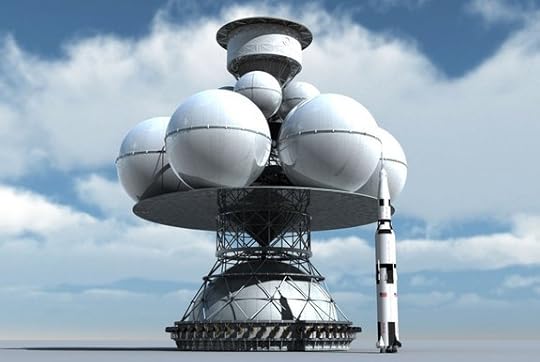 Artist’s concept of the Project Daedalus spacecraft, with a Saturn V rocket standing next to it for scale. Credit: Adrian Mann
Artist’s concept of the Project Daedalus spacecraft, with a Saturn V rocket standing next to it for scale. Credit: Adrian MannWhile researching the topic to find out how long it would take a nuclear-powered spaceship to make the journey, I stumbled across Futurism.com and saw that they had reposted the old version of the article. I also noticed that they had reposted a few articles done by little ol’ me, which include the very first article I wrote back in Oct of 2014 (about hibernation technologies for a trip to Mars).
While telling them that a newer version would be coming out, the manager and I got to talking. I asked them if they would appreciate some articles on terraforming, and happened to mentioned that I was writing a book where that was a major theme. To my surprise, they expressed interest in both things, and asked if they could interview me when the book was done.
Naturally, I was worried they thought I was someone who was… you know, a big deal! I was sure to point out that this book was fiction and not some professional treatise. I’m not exactly Mike Brown or Neil DeGrasse Tyson here. But they said it was cool! Then I pointed out that I didn’t have a publisher lined up, and it might very well be indie published in the end. They said that this was cool too!
 Color-enhanced map of Mercury. Credit: NASA/JPL
Color-enhanced map of Mercury. Credit: NASA/JPLSuffice it to say, I was surprised and flattered. And after talking this over with my boss (I wanted his permission to write content that would be put on another site, he said that was cool!), he told me that Universe Today would be promoting the hell out of it too. I was honored. At no point did I ask or expect that the people I work for would be promoting something I wrote on my own time. But of course, I was sure to let them know that the work I was doing for them is what inspired it.
Were it not for all the research I had been doing about the Solar System and articles I was writing about its various planets, the story would not exist. It actually all started with the article I wrote on Mercury, in fact. Learning about its extremes in temperature, its richness in minerals, its very slow rotation, and its icy poles all made me think that a mining colony would be possible there someday. Especially if it were a penal colony!
Bottom line, when the book is finished, two prominent websites are going to be making a big deal out of it. How cool is that?
And just in case anyone is interested, those terraforming article are now finished and up at Universe Today. There are three in the series now, starting with a rundown of the topic, and ones on how it could be done on Venus and Mars. Next up, the Moon, followed by Mercury and the Outer Solar System. Feel free to leave comments too, especially constructive ones. :)
The Definitive Guide To Terraforming


March 5, 2016
The Cronian Incident – Setting The Scene
In my last post, I explained how I was struggling with my latest story. Particularly, it has been the task of setting the scene over and over again that’s been tiring me out. Luckily, I’m beginning to get to work again, thanks to getting a second (or third) wind. But the challenge is still a big one, so I thought I might share some of what I’ve working on and see if it helps break the logjam.
As I also mentioned last time, there are four major settings in The Cronian Incident. These consist of the planet’s Mercury, a space elevator above Mars, Jupiter’s moon of Callisto, and Saturn’s moon of Titan. Establishing these places as backdrops for the story presented many opportunities. You have to think about how people would go about colonizing and living on these worlds.
But there’s also the fun that comes from figuring out what a culture that evolved to live on these planets and moons would look like. What languages do they speak? What religions do they practice? What does their clothing look like, what kind of music do they listen to? And what kinds of technology do they rely on?
 Mercury:
Mercury:
The story opens on the planet Mercury, where mining crews diligently travel out onto the dark side of the planet, extract ore, and then return to the northern polar region. This area, which is permanently shaded, is the only part of the planet which is inhabited – after a fashion. In truth, no one really calls the planet home. But there are facilities located in the large craters, where convicts and temporary laborers harvest minerals, energy, and ice.
For the miners, their facility is located in the Prokofiev crater, which one of the larger craters in the northern polar region. It is here where miners return with their hauls of ore, which is then processed and fired into space by the Sling – a magnetic accelerator that shoots it into orbit. Some food is grown on site, most of it is shipped in, and water is sourced locally from the ice deposits. And all waste products are recycled to provide the bare necessities of life.
It is a dark place, where convicts and laborers are housed four to a room and are administered regular doses of antidepressants (to address their natural feelings of isolation and lack of natural sunlight). Convicts also have the added bonus of being equipped with “Spikes”, a neural implant that monitors their aggression levels and incapacitates them if they ever attempt to do anything violent.
And just in case they attempt anything illegal, the convict population can be confined to solitary cells, where the room’s are entirely nondescript, tiny, especially dark, and they have no company at all except for their demons.
Mars:
Along with Earth, the Moon, and Venus, Mars is part of the Triumvirate – a loose alliance that embraces the most advanced worlds in the Solar System. Over 50 million people live on its surface, whereas a few million more live in orbital habitats and the Ares Installation, which sits atop The Drift (the planet’s space elevator). This installation is essentially an O’Neil Cylinder (though its more like an O’Neil can) that consists of two “hemispheres” that rotate in opposite directions- simulating gravity up to the standard Martian 0.376 g.
This self-contained world is divided into Sadak, the Hindi word for road (which is one of the official languages on Mars). Each Sadak has its share of domiciles, parks, recreation facilities, and aerodromes, where people go to test out their personal fliers. At the “southern” end of the facility is Sadak Lovelock, which is the home of the Chandrasekhar clan. Within the Formist faction, the people dedicated to terraforming Venus and Mars, they are kind of a big deal. In tall towers that face towards the planet below (which is visible through massive panels) they plot the transformation of the Red Planet into a green planet.
Lovelock is named in honor of James Lovelock, the British scientist who co-authored The Greening of Mars (one of the seminal works about terraforming). It is here that the elder Chandrasekhar (Piter Chandrasekhar) lives in what is known as a Heilig Room. Also known as a Lattice Quantum Chromodynamics environment, this room allows Piter – who is basically an upload at this point in time – to assume physical form and interact with simulated environments.
 Terrafomed Mars. Credit: ittiz/deviantart.com
Terrafomed Mars. Credit: ittiz/deviantart.comWhen Ward (the MC) meets him in this environment, he gets treated to familiar places from Piter’s life. This includes Mombasa, where Piter lived and worked during the mid-21st century, helping to create the coastal Lillypad city of Kimbilio. He then gives him a vision of Mars, of how it will look once the Formists are finished transforming it into a world with oceans, vegetation, and a breathable atmosphere.
Callisto:
In part III, Ward reaches the Jovian system – aka. the system of Moons that orbit Jupiter. His first stop is the moon of Callisto, which is the outermost of the Jovians. It is a cold, frozen world with virtually no atmosphere. All major settlements consist of sealed domes that were built into the moon’s massive craters. The largest of these is the moon’s capitol of Valhalla, which was built Callisto’s massive multi-ring impact crater of the same name.
The city consists of several rings, each of which is named after a different world of the Norse mythology. Working from the outermost ring, there is Vanaheim (where the spaceport is located), Alfheim, Midgard, Jotunheim, Svartalfheim, Nidavellir, Niflheim and Muspelheim. When travelling through the city to find an old friend, Ward stops in Niflheim. It just so happens to be one of the city’s poorer districts, where the moon’s radical elements (known as the Aquiline Front) live.
 View above a methane lake on Titan. Credit: Kees Veenenbox/space4case.com
View above a methane lake on Titan. Credit: Kees Veenenbox/space4case.comTitan:
Last, there is the Cronian moon (Saturn’s moon) of Titan, where Ward inevitably goes to determine what happened to the man he’s trying to find. Much like the other moons of the outer Solar System, Titan is a world who’s surface consists mainly of ice. But unlike the other moon’s, Titan has a dense atmosphere of nitrogen, methane and other hydrocarbons. It’s surface is also covered in lakes of liquid methane, which is one of the planet’s chief exports.
The capitol of this world Huygens, a domed city named in honor of the moon’s discoverer (Christiaan Huygens). Located near the moon’s equator, this city is home to the moon\s main spaceport and is also the economic and administrative center of the entire Cronian system. As such, both the offices of the Cronian Union and the system’s more radical element – the Centimanes – are located here.
The city is also home to the infamous “Yellow Light District”, a pleasure dome that caters to every appetite imaginable. Naturally, I make sure that Ward visits here at some point, hoping to learn what he can from the moon’s many “pleasure technicians”. And of course, what he learns will both shock and intrigue him.
That’s what I got so far. And as I said, it’s been quite exhausting creating it all. I can only hope that the interest people derive from reading it will be proportional to the amount of energy it takes to write it all down!


February 24, 2016
The Cronian Incident – Halfway Done!
According to the Science Fiction and Fantasy Writers of America, a work needs to be over 40,000 words long to be classified as a “novel”. This is just one standard, but right now, it’s an important one as far as I am concerned. Why? Two reasons: one, its what the SFSWA uses to classify books when considering them for a Nebula Award. Since science fiction is my chosen genre, I got to think these people know what they are talking about.
Second, and perhaps more importantly, it is because my WIP, The Cronian Incident, just passed this milestone. At present, the novel is 22 chapters and just over 43,000 words in length. And I’m only about halfway done! Problem is, this is where I begin to feel the crunch with most novels. Halfway is a bad point to be in when you’re me, because you’re feeling the weight of all that you’ve created so far, and are really aching to get to the finish line!
In the meantime, I am busy exploring the various aspects of Part III of the book, otherwise known as “Jovians”. In this part, the story’s MC, Jeremiah Ward, has traveled to the Jovian moon of Callisto (the fourth large moon of Jupiter) to meet his associate in the investigation. It is also here that he meets an old contact of his from his police-work days, and tries to learn more about the people he is working for.
One of the things that makes this challenging is that I spent the past few months developing characters and the settings of two different worlds. The story began on Mercury, moved to Mars, and now, its in orbit around Jupiter. From the surface of a cratered, hostile world, to a space elevator in orbit of Mars, and now to a frozen moon around a gas giant. Gah! I think I’ve officially OD’d on setting!
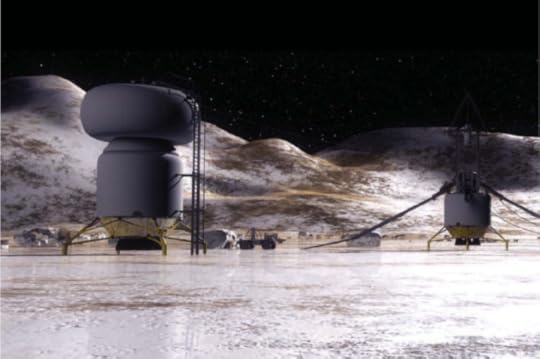 Artist’s impression of a possible base on the surface of Callisto. Credit: NASA
Artist’s impression of a possible base on the surface of Callisto. Credit: NASABut I shall persevere. I’ve put too much into this idea to abandon it halfway, and this is one novel that I am determined to see through to completion! So – and I apologize in advance for this – expect to hear me blab a lot about it in the weeks and months to come. And you can bet I will be blabbing non-stop about it once its finished. Thanks to all those who are still paying attention :)


February 17, 2016
Guest Post By Maria Ramos: How “Cli-Fi” Comments on Energy Crisis, Climate Change, and Overpopulation
Welcome back Maria Ramos! Today, she would like to talk to you all about another aspect of the science fiction landscape – a lesser-known subgenre known as “cli-fi”. Embracing dystopian narratives and speculative fiction that looks at the future through the lens of environmentalism and climate change, cli-fi is very similar to other sub-genres of science fiction. In the end, its all about cautionary tales and agitating for change. But I’ll let her explain it, as she’s better at this sort of thing!
Dystopian fiction has always provided a means of commenting on and critiquing the political and social statuses of the eras they were created in. From George Orwell’s 1984 and Animal Farm to the more recent P.D. James’ The Children of Men and Kazuo Ishiguro’s Never Let Me Go, the fiction changed with the prevalent issues of the times, from the cold war and communism to concerns over reproductive rights. Throughout the genre the fear of too much government control over some or all aspects of our lives has remained a central theme. More recently, focuses have turned to nature and the negative effect that humanity has on the environment.
While existing for decades, the recent upsurge in dystopian fiction has taken a turn into the newly coined sub genre of “cli-fi” or climate change fiction, which depicts current and very valid concerns over environmental, overpopulation, and global warming issues. Much of this fiction also targets a young adult audience. Perhaps this is to encourage the next generation of scientists and technology experts to work with the current generation in seeking solutions for our environmental issues. Such problems include a steady increase of the amount of carbon dioxide in our atmosphere since 2007, creating what the National Oceanic and Atmospheric Administration (NOAA) has reported are the highest levels in 650,000 years. Some cli-fi books even tackle this very issue head on.
Two of the best-known examples of young adult cli-fi are The Hunger Games trilogy and The Maze Runner trilogy, both with blockbuster movie counterparts. In each of these, the characters live in a world depleted of natural resources because of some sort of man-made, or at least man-assisted, environmental disaster. While The Hunger Games doesn’t provide the specifics of what caused the world to become Panem, it’s clear that a central government controls the limited resources that are left while the general population struggles. While criticized for ignoring such issues as racial tensions, it nonetheless ticks the boxes of government excess leading to suffering for the general populace.
In The Maze Runner, the cause for the world’s destruction is more specifically attributed to solar flares, which devastated the majority of the planet and left the few survivors destitute. Further government meddling then caused many of those survivors to degenerate into a crazed and animalistic existence in which they tear each other apart. While neither of these trilogies, nor many of the other works of cli-fi, provide solid solutions for fixing the world once it’s gotten to the post-apocalyptic point of the stories, they remind us that consequences will remain devastating if we do nothing now.
The term “cli-fi” is popularly attributed to Dan Bloom in 2008, but nonetheless can define works of fiction created as early as the mid-20th century. Before there was such a term, authors such as J.G. Ballard were producing works of fiction describing a post-apocalyptic world caused by the effects of global warming, works such The Wind from Nowhere in 1961, The Drowning World in 1962, and The Burning World in 1964. Describing different worlds ravaged by hurricane-force winds, melting polar ice caps, and worldwide drought, respectively, such works provide early warning of the ravaging effects of global warming if left unchecked.
More recent examples that existed before 2008 include the first novel of Margaret Atwood’s MaddAddam trilogy, Oryx and Crake, written in 2003. Set closer to the present, this trilogy delves into the possible detrimental effects of biotechnology on both the environment and on the human inhabitants of the planet. It also takes aim at multinational corporations that ignore and/or deny their role in global warming and environmental disasters, alluding to real issues faced by today’s environmentalists worldwide. Other examples of more adult-oriented dystopian novels that address the possibility of environmental catastrophes include The Road, the excellent post-oil-crisis novel The Windup Girl, and The Children of Men.
Whether the rise in recent works of cli-fi is having any effect on our actions toward being more environmentally responsible or not, artists and writers have always found ways to provide commentary through entertainment. In the case of saving our planet, any means of getting the message across is welcome and necessary.


February 4, 2016
The Cronian Incident – Part II Complete!
Hey folks! In recent months, I’ve hit two milestones in the writing of my novel. The first occurred weeks ago, when I chose to change the title. The second, and more important, is that book is now half done. Yes, with part II of the story complete, and approximately 40,000 words down on paper, the novel is now halfway towards completion. That means this book is not only out of the crib and walking, its off and running. Now it just needs to avoid any nasty spills and it will be in business!
But first, let me explain why I renamed it. Basically, this book is about an “incident” that takes place on one of Saturn’s moons (Titan). Here, a high-profile figure connected to terraforming interests on Mars goes missing. The investigation into this mysterious disappearance takes the investigator (Jeremiah Ward) from Mercury, to Mars, and then to Jupiter’s moon of Callisto before moving on to Titan. Since the focus of the investigation is on the these two moons, I decided to use the name “Jovian”, since this term applies to any moon that orbits a gas giant.
 Jupiter’s larger (Galilean) moons, from left to right – Callisto, Europa, Io and Ganymede. Credit: NASA
Jupiter’s larger (Galilean) moons, from left to right – Callisto, Europa, Io and Ganymede. Credit: NASABut eventually, I found this name to be problematic. For one, the larger moons that orbit Jupiter – Io, Europa, Ganymede and Callisto – are often referred to as “The Jovian Moons” (derived from Jove, the archaic name for Jupiter). While they are more properly known as “The Galilean Moons” (after their discoverer, Galileo), the name is applicable here more than with any other moon in the Solar System. Specifically, Saturn’s moons are properly called Saturnian or Cronian.
Another reason I wanted to call it the Jovian Incident was because I wanted it to be a compact volume consisting of three parts. Part I (Hermians) takes place on Mercury and shows the life of convict laborers; Part II (Martians) shows what life is like on a planet in the inner Solar System; and Part III (Jovians) covers all the action taking place in the outer Solar System and shows how people in this part of the universe live.
However, I finally realized this structure wouldn’t fly. For one, it would cause confusion to say the incident was “Jovian” when the moon where it happened on is called Cronian in the book. Second, I knew the three part structure wouldn’t fly, since it would mean Part III would likely be longer than Parts I and II combined. So I decided to add a Part IV (“Cronians”), and rename the book “The Cronian Incident”.
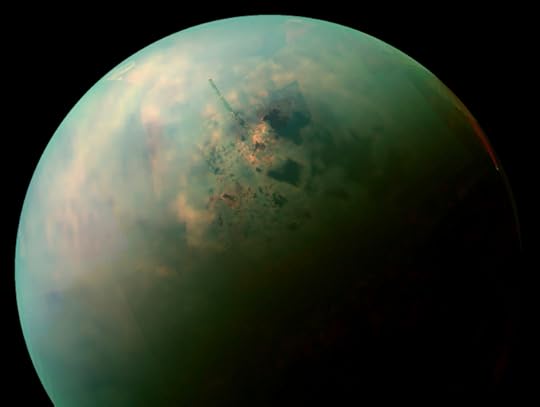 Saturn’s moon Titan, which figures prominently in the story. Credit: NASA
Saturn’s moon Titan, which figures prominently in the story. Credit: NASAAnd with Part II complete and Part III underway, I have covered all the necessary exposition and background, and am now moving onto the action part of the story. I would say this is where the fun part begins. But as I am sure many would agree, once you are half done a project, completing it somehow feels more difficult. For me, starting something is the easy part. Building on that foundation is also fun. But getting it from a work-in-progress to a finished work, that’s the hard part!
So feel free to wish me luck. Also, thanks for staying abreast of my progress. For those who had a helping hand, I intend to make this book available, free of charge, once its ready. And unlike some of the thing I wrote, it should work out to a (relatively) compact 80,000 words. No tomes here!
More to follow, stay in touch!
Top Image Credit: Lightfarm Studios


December 18, 2015
The Jovian Incident – Factions in the Future
 Future City [3] by josueperez79 at deviantart.comHi again folks! I’m back with some thoughts from my most recent story project – The Jovian Incident. I know, what else is new, right? Writing can be a self-indulgent process. But if there’s one thing I’ve learned, its that sharing helps when it comes to developing a story. It helps you articulate your thinking and ideas, especially if respected peers tell you what they think (hint, hint!)
Future City [3] by josueperez79 at deviantart.comHi again folks! I’m back with some thoughts from my most recent story project – The Jovian Incident. I know, what else is new, right? Writing can be a self-indulgent process. But if there’s one thing I’ve learned, its that sharing helps when it comes to developing a story. It helps you articulate your thinking and ideas, especially if respected peers tell you what they think (hint, hint!)
As I also learned a long time ago, any science fiction piece that deals with the distant future has to take into account how human beings in the future go about organizing themselves. In this future world, what are the political blocs, the alliances, the rivalries – the ways in which people are united and divided? Well, I gave that a lot of thought before sitting down to pen the book (which is into chapter 11 now). And this is the basic breakdown I came up with.
Extro Factions:
For starters, people in the future I am envisioning are tentatively divided into those that live in the inner and outer Solar Systems. But that geographic divide is merely representative of a much bigger issue that divides humanity. Whereas the people living on Earth, Mars and Venus largely fall into the category of “Extro” (i.e. Extropian, people who embrace the transhuman ethic) people in the outer Solar System live simpler, less augmented and enhanced lives (“Retro”).
But within this crude division between people who believe in going beyond their biological limitations and those who believe in respecting them, there are plenty of different social, political and ideological groups to be found. Here’s a rundown on them, starting with the Extro factions…
The Formists:
Founded by Piter Chandrasekhar, one of the first colonists of Mars, the Formists are a faction dedicated to the full-scale terraforming of the Red Planet. The purpose of this, obviously, is to allow for full-scale colonization, which is something that remains impossible at this point in the story. All inhabitants on Mars lived in sealed domes, all transit takes place in pressurized tubes or on flyers, and anyone venturing out onto the surface is forced to wear a pressure suit with life-support systems.

Currently, the Formist faction is run by Emile Chandrasekhar, Piter’s grandson. And for the past few decades, they have been busy procuring resources from the outer Solar System to aid in the terraforming process. This includes supplies of methane, ammonia, ices, and lots and lots of comets.
However, they are also busy trying to ensure that the process will have a minimal impact on the settlements and those living within them. Altering the planet’s atmosphere will definitely have a significant impact on the landscape in the short-term, such as sublimating all the water ice in the Martian soil and in the polar caps. Once that water begins to flow, much of the surface will find itself being swallowed up by newly-created oceans. So naturally, the Formists must proceed slowly, and make sure all settlements on Mars agree to their plans.
While the Formist faction is largely centered on Mars, they have counterparts on Venus as well – known as The Graces (after the children of Aphrodite). Here, the process is significantly different, and involves converting the existing atmosphere rather than increasing its density. But the goal is the same: to one day make Venus a living, breathing world human beings can set foot on.
The Dysonists:
Among the Extros, there are also those who believe humanity’s future lies not in the stars or in the terraforming the Solar System’s planets, but in the space that surrounds our Sun. They are known as the Dysonists, a faction that is intent on building a massive swarm of structures in the inner Solar System. For some, this calls for a series of rings which house the inhabitants on their inner surface and provide gravity through endless rotation.
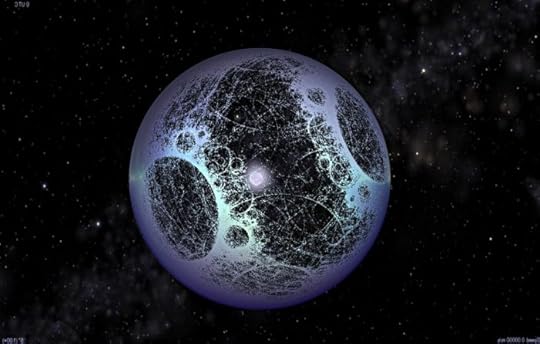 This artist’s concept of a Dyson sphere is via SentientDevelopments.com
This artist’s concept of a Dyson sphere is via SentientDevelopments.comFor other, more ambitious Dysonists, the plan involves massive swarms of computronium that will contain a sea of uploaded personalities living in simulated environments. Both the swarms and the powerful bandwidth that connects them will draw energy from the Sun’s rays. These individuals consider themselves to be the more puritan of Dysonists, and believe those who advocate buildings rings structures are more properly known as Nivenists.
The process of converting all the “dumb matter” in the Solar System into smart matter has already begun, but in limited form. Within a few generations, it is believed that the Sun will be surrounded by a “Torus” of uploaded minds that will live on while countless generations come and go. Dysonists and their enclaves can be found on Near-Earth Asteroids, in the Main Asteroid Belt, and with committed supporters living on Venus, Mars, Earth, the Moon, and Ceres.
The Habitationists:
Inspired by Gerard K. O’Neill, the inventor of the O’Neill Cylinder, the Habitationists began as an architects dream that quickly expanded to fill all of known space. In the 21st century, Earthers looking to escape the growing population crisis began migrating to space. But rather than looking to live on distant worlds or the Moon, where the environment was harsh and the gravity limited, they decided to set up shop in orbit. Here, supplies could be shipped regularly, thanks to the advent of commercial aerospace, and gravity could be simulated at a full g thanks to rotating toruses.
By the mid 22nd century, Low Earth Orbit (LEO) Habs had become all the rage and the skies became somewhat saturated. The existence of Earth’s space elevator (The Spindle) only made deploying and supplying these Habs easier, and a steady drop in the costs of manufacturing and deploying them only made them more popular. As such, Terran architect Hassan Sarawak, who had designed many of the original habitats in space, began to busy himself designing a new series of Habs that would allow human beings to live in space anywhere in the Solar System.
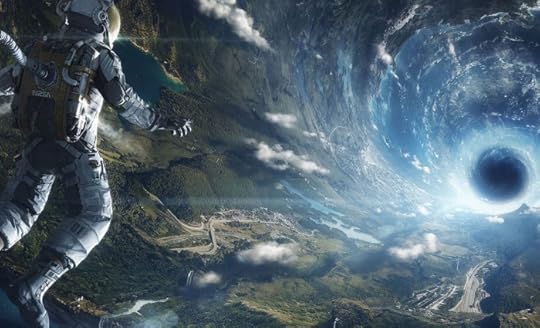 Artistic impression of the inside of an O’Neil Cylinder. Lightfarm Studios
Artistic impression of the inside of an O’Neil Cylinder. Lightfarm StudiosBy the end of the 22nd century, when the story takes place, large cylinders exist in several key places in the Solar System. Most are named in honor of either their founders, those who articulated the concept of space habitats, or those who believed in the dream of colonizing space itself (and not just other planets and moons). These places are thusly named O’Neil’s Reach, Clarkestown, Sawarakand, and New Standford.
The Seedlings:
As the name would suggest, the Seedlings are those intrepid Extropians who believe humanity should “seed” the galaxy with humanity, spreading to all solar systems that have confirmed exoplanets and building settlements there. But in a slight twist, they believe that this process should be done using the latest in nanotechnology and space penetrators, not slow interstellar ships ferrying human colonist and terraformers.
To the Seedlings, who can be found throughout the inner Solar System, and on some of its most distant moons, the idea is simple. Load up a tiny projectile-ship with billions of nanobots designed to slowly convert a planet’s climate, then fire it on a trajectory that will take it to an exoplanet many generations from now. Then, prepare a ship with colonists, send it on its merry way into space, and by the time they reach the distant world, it will be fully prepared for their arrival.
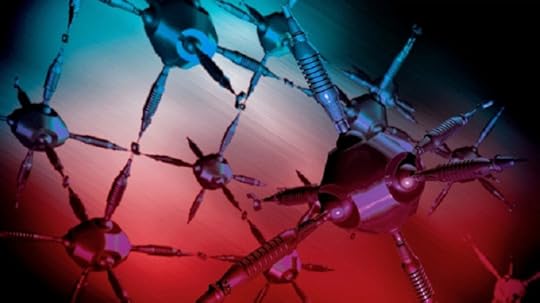
At this point in the story, the Seedlings first few missions are still in the planning stages. They’ve got the technology, they’ve got the know-how, and they know where the right candidate planets are located. All they need to do know is test out their machines and make sure the process works, so that they won’t be sending their colonists into a deathtrap.
Sidenote: this idea is actually one I explored in a short story I am trying to get published. If all goes well, I am the short story and this full-length idea can be connected as part of a singular narrative.
Retro Factions:
And now we come to the people who live predominantly in the outer Solar System, the folks who found life on Earth and the inner worlds unlivable thanks to its breakneck pace and the fact that life was becoming far too complicated. These are the people whom – for religious, personal, or moral reasons – chose to live on the frontier worlds in order to ensure something other than humanity’s survival as a species. For these people, it was about preserving humanity’s soul.
Organics:
In the mid to late 21st century, as biotech and cybernetics became an increasingly prevalent part of society, a divide began to emerge between people who enhanced their biology and neurology and those who did not. While the former were in the minority for the first few decades, by the latter half of the 21st century, more and more people began to become, in essence, “transhuman” – (i.e. more than human).

At the same time, fears and concerns began to emerge that humanity was forsaking the very things that made it human. With lives becoming artificially prolonged, human parts being swapped for bionic or biomimetic implants, and brains becoming enhanced with neural implants and “looms”, humanity seemed on course to becoming post-human (i.e. not human at all).
And while the concerns were justified, few who could afford such enhancements seemed to be willing to forsake the convenience and necessity they represented. In a world where they conferred advantage over the unenhanced, choosing not to augment one’s body and mind seemed foolish. But between those who could not afford to, those who were forbidden to, and those who chose not to, eventually a new underclass emerged – known as “Organics”.
Today’s organics, who live predominantly in the outer Solar System or isolated pockets in the inner worlds, are the descendants of these people. They live a simpler life, eschewing most of the current technology in favor for a more holistic existence, depending on various levels of technology to maintain a certain balance.
Fundies:
Naturally, human beings in the late 22nd century still have their faiths and creeds. Despite what some said in previous centuries, mankind did not outgrow the need for religion as it began to explore space and colonizing new worlds. And when the Singularity took place in the mid 21st century, and life became increasingly complex, enhanced, and technologically-dominated, the world’s religiously-devout began to feel paradoxical. On the one hand, religion seemed to be getting more unpopular and obsolete; but at the same time, more rare and precious.
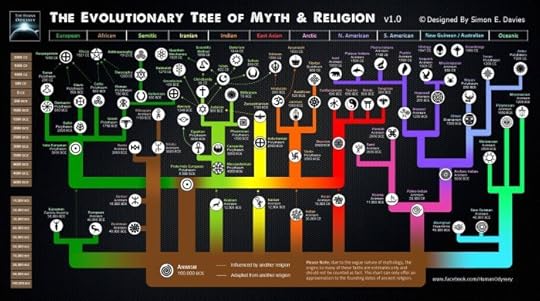
To be fair, there was a time when it seemed as though the prediction of a religion-less humanity might come true. In the early to mid 21st century, organized religion was in a noticeable state of decline. Religious institutions found it harder and harder to adapt to the times, and the world’s devout appeared to be getting increasingly radicalized. However, in and around all of these observable trends, there were countless people who clung to their faith and their humanity because they feared where the future was taking them.
In the current era, the outer Solar System has become a haven for many sects and religious organizations that felt the Inner Worlds were too intolerant of their beliefs. While there will always be people who embrace one sort of faith or another on all worlds – for instance, billions of Extros identify as Gnosi or Monist – the majority of devout Kristos, Sindhus, Mahavadans, Mahomets, and Judahs now call the worlds of Ganymede, Callisto, Europa, Titan, Rhea, Iapetus, Dione, Tethys, Titania, Oberon, Ariel and Umbriel home.
The vast majority of these people want to live in peace. But for some, the encroachment of the Inner Worlds into the life and economies of their moons is something that must be stopped. They believe, as many do, that sooner or later, the Extro factions will try to overtake these worlds as well, and that they will either be forced to move farther out, colonizing the moons of Neptune and the Kuiper Belt, or find homes in new star systems entirely. As such, some are joining causes that are dedicated to pushing back against this intrusion…
Chauvians (Independents):
Many in the past also thought that nationalism, that sense of pride that is as divisive as it is unifying, would also have disappeared by this point in time. And while humanity did begin to celebrate a newfound sense of unity by the late 21st century, the colonizing of new worlds had the effect of creating new identities that were bound to a specific space and place. And given the divisive political climate that exists in the late 22nd century, it was only natural that many people in the Outer Worlds began preaching a form of independent nationalism in the hopes of rallying their people.

Collectively, such people are known as “Chauvians“, a slight bastardization of the word “Jovian” (which applies to inhabitants of any of the outer Solar System’s moons). But to others, they are known simply as Independents, people striving to ensure their worlds remain free of external control. And to those belonging to these factions, their worlds and their people are endangered and something must be done to stop the intrusion of Extros into the outer Solar System. For the most part, their methods are passive, informative, and strictly political. But for others, extra-legal means, even violent means, are seen as necessary.
Examples include the Children of Jove and the Aquilan Front, which are native to the Galilean moons of Jupiter. On the Cronian moons, the Centimanes are the main front agitating for action against the Extros. And on the Uranian moons, the organizations known as The Furies and the Sky Children are the forces to be reckoned with. Whereas the more-moderate of these factions are suspected of being behind numerous protests, riots, and organized strikes, the radicals are believed to be behind the disappearance of several Extro citizens who went missing in the Outer Worlds. In time, it is believed that a confrontation will occur between these groups and the local authorities, with everyone else being caught in the middle.
And those are the relevant players in this story I’m working out. Hope you like them, because a few come into play in the first story and the rest I think could become central to the plots of any future works in the same universe. Let me know what you think! :)


December 7, 2015
Jovian Incident – Part I complete!

Hey there, folks! As the title of this entry would suggest, I’ve made some serious progress on my latest book, The Jovian Incident. After a few months of writing, I’ve finished all nine chapters of the first installment – aka. Part I: “Hermians”. These chapters cover the part of the story that takes place on Mercury, where the main character is introduced, some details of his background are revealed, and he is eventually recruited to go do a job.
This part was also a chance to preview the universe I went about building for the story. This included not only using Mercury as the setting for a prison planet, but descriptions about what Earth, Mars, Venus looked like in this day and age. And there was the matter of how people lived in a post-Singularity universe, when a whole range of amazing technologies were at their disposal. Today, I thought I’d focus on one in particular. The subject of…
Clinical Immortality!
To be clear, clinical immortality in this context does not refer to cryogenics or frozen heads waiting to be stitched onto bodies once they find a cure for… whatever. In this context, clinical immortality refers to what is possible through advances in biotechnology, robotics and cybernetics, to the point where human beings can artificially prolong their lives for centuries. At the same time, it refers to knowledge of the brain and computing advancing to the point where people can back up their neurology, living on indefinitely as a digital “ghost in the machine”.
In short, those who have access to this kind of technology in my story have a lot of options for staying alive. One of the more popular (but more complicated) ways is to create clones of oneself, which are then be equipped with the host’s memories backed up to the point of their death. These “facsimiles” are able to carry on in the place of the original, creating an unbroken chain of lineage. The reason why this means is complicated is because if two versions of the same person are alive at the same time, it creates some sticky legal issues.
 To put it in perspective, here’s a fragment from the story, where the MC (Jeremiah Ward) is reminiscing about a case he once had to deal with aboard an LEO Hab called Ri-La. Basically, LEO Habs are habitats that exist in Low-Earth Orbit. The owner in question was a former magnate named Xian, a man who lived in the early 21st century before “dying”:
To put it in perspective, here’s a fragment from the story, where the MC (Jeremiah Ward) is reminiscing about a case he once had to deal with aboard an LEO Hab called Ri-La. Basically, LEO Habs are habitats that exist in Low-Earth Orbit. The owner in question was a former magnate named Xian, a man who lived in the early 21st century before “dying”:
“I went there as part of a case back in 23’. The whole place had been built by some old Terran magnate named Xian. Some Jom-gua gentleman, born in the previous century who made his fortune running bio, shipping and software. Before he died, he had a Hab commissioned in orbit for his wife and family, and then invited his extended family to move there so they could have their own orbital estate all to themselves.”
“Died?” said Guernsey, noting the one word that seemed out of place in the story. “This guy, he was an Extro. And he died? Like… for real?”
“No, no…” Ward replied, waving his hand dismissively. “Though he did forego the whole facsimile thing, the old man uploaded himself like anybody else before he got too old, suffered brain death. That way, his children, nieces and nephews had the run of the place and could summon him whenever they wanted.”
“Descendants calling up their great ancestor,” said Burton. “Fucking vain, if you ask me. But makes sense if you’re one of them Core types, all rich and shit.”
“Well and he was the traditional sort, that guy. Not a lot of people back home who were like him anymore. Most people take the idea of post-mortality too literally.”
As he goes on with the story, he explains how he was on the habitat to investigate a murder case. At the heart of the case was an inhabitant who got into a struggle with their facsimile:
“Turns out some of the Xian clan were not as traditional as their forebear. Some of them went about creating facsimiles of themselves, even woke them up before they died. I don’t know, all that time in orbit, they must have feared they’d die out unless they started cloning themselves.”
“It didn’t occur to them to get some new blood in the place? Or even someone’s DNA?”
Ward shrugged. “Who knows? Maybe they couldn’t find anyone they thought worthy. Point is, having more than version of yourself around can get ugly, especially when there’s inheritance on the line. And in this case, one kid was killed by another version of himself.”
“Wow…” Jordon whispered. “Was it hard to figure out who did it?”
“Not even a little bit,” said Ward, shaking his head. “Forensics took all of five minutes. The trickier part was trying to deduce if the victim was an original or not. As you know, the penalty for a facsimile killing their original is way higher than the reverse.”
A little later, Ward is confronted with the man who comes to Mercury to offer him a job. His task, he learns, is to venture to the Outer Solar System and find a colleague who has gone missing. Given that the man he is tasked with finding is clearly of the Extro (Extropian) faction, he naturally feels the need to ask the obvious:
“This man, there’s a record of his DNA, yes?”
“Of course,” Chandrasekhar replied simply.
“And his neurology is on file as well, I take it?”
“Backed up directly before his departure, yes.”
“So why not just reproduce him and cut your losses?”
“Well, three reasons.” Chandrasekhar raised three fingers and began listing them off. “For one, the man in question was a conservative soul. He would not approve of being resurrected unless it was absolutely necessary. Second, if he were still alive and turned up after we produced his facsimile, there would be some sticky issues of legality to contend with.”
I wanted to include all this stuff in the story for two reasons. On the one hand, as a way of commenting on some of the issues that are likely to come up if and when such things are possible. And two, to address the fundamental question: if people are capable of uploading themselves, and creating facsimiles of themselves, what will it mean for issues of identity, legality, and even mortality?
If death is no longer an inevitable fact of life, will death cease to have meaning? And by extension, will life cease to be valued? If someone can just recreate themselves, then what harm is there in murdering them? And if the only real loss is memory that hasn’t been backed up, will the information they carry in their minds be more valuable than the person themselves?
But this of course is all background stuff, something that is meant to frame the main story, which I am still working on. But I feel at this point that it’s off and running. So as I get into Part II: “Martians”, I hope to be getting away from some of that stuff, and more into the issues of timelines, plot, and more character development. Stay tuned!


December 2, 2015
A Soldier’s Mettle
Well this is interesting. It seems that a year ago today, someone I never met cited a quote from Papa Zulu in order to pay homage to veterans everywhere. And were it not for the fact that I entered this quote into my search engine to see if I really did write it myself (Goodreads said I did, but I myself was wondering!), I never would have known!
Thanks Maiden, and keep up the good work of honoring those who have fought so other wouldn’t have to, those who fell in the commission of that service, and those who came home forever changed.
 Originally posted on Maiden on the Midway:
Originally posted on Maiden on the Midway:
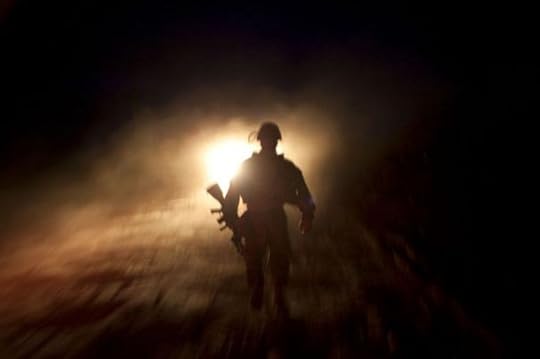 Sgt. Matthew Bland and the Marines with Cpl Sean Leahy squad prepare to RTB (return to base) after completing their mission. The Marines are assigned to 3rd Battalion 5th Marines — Nelvin C. Cepeda
Sgt. Matthew Bland and the Marines with Cpl Sean Leahy squad prepare to RTB (return to base) after completing their mission. The Marines are assigned to 3rd Battalion 5th Marines — Nelvin C. Cepeda
“The true test of a soldier’s mettle is to see whether or not they will cling to what they believe in, even in the face of impending death.”
―Matthew S. Williams


November 25, 2015
Featured Guest Post: “Ignored Issues in Dystopian Fiction” by Maria Ramos

Maria Ramos is back with another interesting look at the world of dystopian sci-fi. This time around, she offers her insight on an issue that is often overlooked in the genre. Whether it is missing from the writing itself, or is overlooked in the course of adaptations and literary criticism, somehow the issue of race – whether it is the race of the characters or how it is dealt with in a fictional setting – seems to fall by the wayside. But I’ll let her explain it, she’s better at it!
Dystopian fiction has been around for decades, with notable examples including 1984 and Animal Farm. It’s not just in old books from English class, either. This is one genre that has never gone away. From The Matrix in the 90s to V For Vendetta in the aughts, every decade has had its stories. New blockbuster hits such as The Hunger Games and Divergent are the latest additions, and this time young adults are leading the dystopian charge. With The Hunger Games: Mockingjay Part 2 slated to carry the series past the 3 billion dollar mark and the books alone selling close to 20 million copies, it looks like this angsty genre has a rosy future.
While the technology that featured in previous variants is still visible, it is overbearing governments that have really become the boogeyman in the closet. It’s not surprising, considering the audience. Just when young adults are beginning to become more independent of their parents, they are also becoming more aware of the restrictions that society and governments place on all citizens. This can be a hard pill to swallow for anyone, but the first cut is the deepest. Governments acting as Big Brother – or like an overly controlling parent – are a pretty terrifying prospect for anyone feeling that first heady rush of freedom. Tellingly, despite the many other issues faced by society today, it is these pesky totalitarian governments that are the backbone of the modern genre.
In fact, totalitarian governments are viewed by many in this demographic as something to truly fear, both in fiction and in real life. This is evidenced by protests against police brutality, the NSA, and even against Wall Street, which are all founded in the same fear of a small elite class being able to suppress the majority of the population. On the other hand, racism and sexism, two other huge issues faced by modern society, are rarely addressed at all.
For example, in The Hunger Games there is no real mention of Katniss’ gender when she goes to fight to the death. Previous victors are shown as both male and female, and an equal number of each compete. There is no mention of the physical disadvantages women might have in a hand-to-hand battle, nor of the specific additional dangers they might face. Tris’ gender in Divergent and Insurgent (both of which are available now through Netflix, DirecTV, and Amazon) is treated the same way, though in both cases a romantic attachment is formed with a fellow warrior, offering some additional measure of protection and responsibility.
Likewise race is glossed over for the most part in The Hunger Games, though certain districts appear to be black and others white based on the tributes they have sent. This segregation is not seen as a problem in the film, nor is it a problem that the central characters are all young, attractive, and white. In both cases, racism and sexism are simply ignored, as if they do not exist. The demon of the movie is a heartless ruling class, and other issues just don’t seem to register.
This genre-wide silence in the face of such major issues is puzzling. Could it be that, rather than being non-topics, they are in fact so controversial that writers and directors are afraid to touch upon them? Or are they seen as relics of the past in a futuristic genre? Despite the huge impact these issues still have on citizens today, part of the battle activists face is even getting people to acknowledge that a problem still exists. Though these issues remain relevant, many today view racism and sexism as shrinking and government overreach as growing, possibly resulting in this void we see in the fiction.
In fact, there is also a combination of idealism and cynicism visible in many of these more recent stories – things became so terrible because people allowed them to, but eventually those same people fight back for change and improvement. It may be that same combination of naiveté and shrewdness that allows both the creators and fans to ignore issues they do not want to face. However, by refusing to address it they actually reflect it, as many of these movies and television series are overwhelming white. The main characters may often be female, but any additional struggle they face due to their gender is largely ignored. As valuable as today’s fiction is in shining a light in dark corners, it seems like right now a brighter flashlight is needed.


November 20, 2015
The Jovian Incident: Development of AI
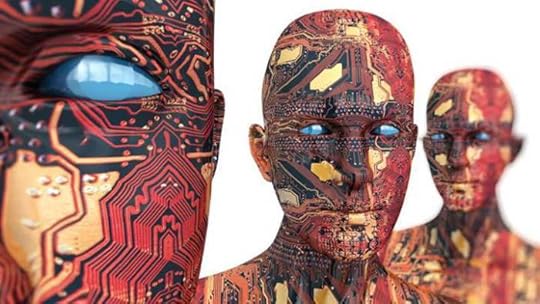 Hey folks, in my ongoing drive to keep people abreast of my writing process, I have decided to do another update on my progress with The Jovian Incident. I am now six chapters in, and the word count has grown to a robust 13821. By this measure, I am 26,179 words away from a full-length novel. But as John Cleese once said, “It’s not just the number of words. I mean, getting them in the right order is just as important.”
Hey folks, in my ongoing drive to keep people abreast of my writing process, I have decided to do another update on my progress with The Jovian Incident. I am now six chapters in, and the word count has grown to a robust 13821. By this measure, I am 26,179 words away from a full-length novel. But as John Cleese once said, “It’s not just the number of words. I mean, getting them in the right order is just as important.”
And so is developing certain ideas, especially ones that serve an important function – like creating the background. And a big thing in this story, given the time period, is the presence of artificial intelligence.
The way I figured it, the best way to figure out how it would be used by the time period in question (22nd century) would be track its progress, going from today to the point of the Technological Singularity – where it would become compatible with human-level intelligence, and then vastly exceed it. Here’s a basic breakdown that I came up with:
Level I: Insect-level compatibility, developed in the late 20th/early 21st century. Used to program nanomachines and swarm-robots, controlled via hive-mind algorithms and collective behavior to achieve group tasks (i.e. construction, maintenance, health and diagnostic medicine).
Level II: Reptile and mammalian-level compatibility, developed in the early 21st century. Used by semi-sentient robots to perform rote tasks, menial labor, and as programming for military hardware (i.e. drones and autonomous vehicles).
Level III: Human-level compatibility, developed by the 2030s. Used to program sentient machines and personal assistants capable of performing complicated task, mathematical calculations, and interacting with human beings.
Level IV: Super-sentience level compatibility, developed by 2100. Used to coordinate entire planetary systems – transportation, economics, virology and geological systems. Only a few in existence – Acidalia (Venus), Gaia (Earth), Harmonia (Mars).
Basically, I envision AI by the 22nd century as being something that is used at all levels of life and society. And after a century of development, the four-tier system described above applies, with simple to incredibly complex machine intelligences being used for different tasks. In this way, machines of various intelligence replaced the old division of labor, leaving humans free to pursue vocations and careers entirely of their own choosing.
Of course, this has a huge downside. Not only has humanity labor in the inner Solar System been deprived of most forms of labor (it can be a source of pride and dignity as much as a burden) but it also means that all human beings are expected to commit to various pursuits and join a faction of one sort or another before long. Life, you could say, has become no less competitive or careerist by adding intelligence machines to the mix.
And of course, life is a bit different in the outer Solar System. Whereas Level I and II intelligences are common, Level IIIs are in limited supply (and generally dated where they are available), and there are no Level IVs.
But of course, that doesn’t even include the kinds of neurological and cybernetic enhancements that humans use to augment their neurology and their biology. That’s where the transhuman and post-human stuff comes in. But that, of course, is a whole ‘nuther post!







